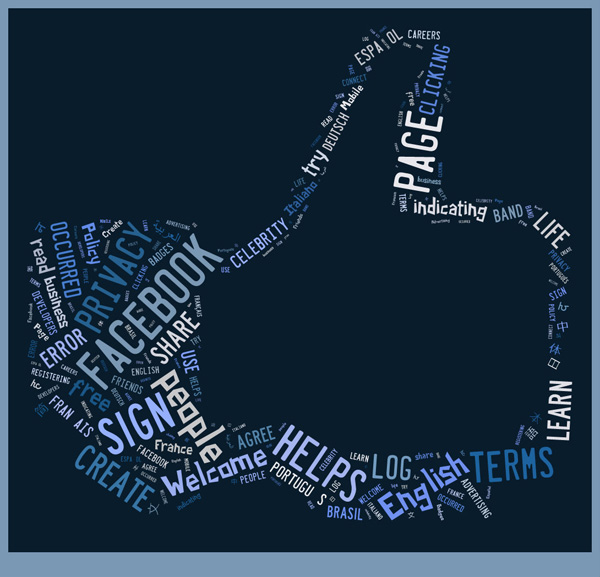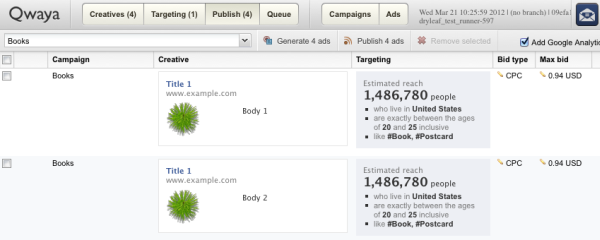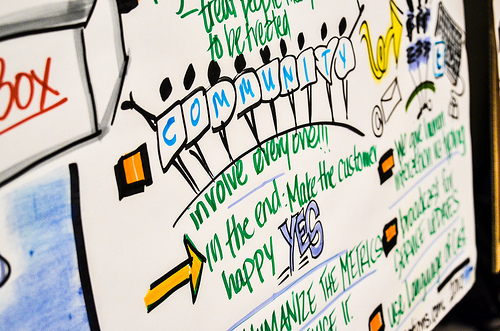This is a guest post from Craig Robinson.
Getting proper return on investment for Facebook advertising can be tricky. First, you need to create an ad that attracts clicks, which usually is the easy part, and then you need a decent percentage of the people clicking through to be potential customers. The last thing is a bit harder to control but has a huge impact on the end result. When the wrong people click, your conversion goes down and you have to pay Facebook for nothing. There are, however, a few tips you can follow that might increase your performance. If your Facebook-advertising results are around break even, they may very well make your advertising efforts profitable.

Top Five Tips for Improved Ad Conversion
Test your ads for conversion
Usually, when we create Facebook ads, we do a number of versions of them (via A/B testing) and then choose the ones that get the highest click-through rate (and this is possibly why we see so many ads with smiling stock-photo ladies). However, this might not be the most effective ad-creation process. When doing it this way, we take don’t take the conversion into consideration, which essentially decides how much we will earn in the end. In most cases, a lower click trough rate with higher conversion is the best option for an advertiser. It gives value for the money put in.
Next time you do a campaign, also measure the end results and not only the clicks. Although clicks are important, they are just a step in the middle of the process.
Pay for the right people
What you need to pay Facebook to get potential customers to see your ads is not exactly crystal clear. In their guidelines, they more or less say that it’s best to choose the max bid when advertising, which isn’t really a surprise since that makes the Facebook owners even richer. Facebook obviously benefits from providing better ad value to people who pay a lot for clicks, and they want them to keep on bidding high so the competition gets even tougher. To achieve this, many advertisers claim that ads with high bids are shown to people who are on Facebook less often but spend more time on every session. The ads will be visible for a longer period of time and the chance of users clicking through and converting is higher.
Compare this to a user who logs in and out several times per day, possibly a younger person or someone who works in an office and checks his/her wall every day. Chances are, this person doesn’t have any intention of following up on the click.
If your conversion is low, test a campaign where you choose the max bid. It might do wonders to the end result.
Timing is everything
Depending on what product or service you promote, you should consider when you want to advertise. Perhaps your conversion is better in the end of the month, during certain days of the week, or perhaps in the night time.
If you’re a wine merchant, your conversion might be better over the weekends. If you deliver pizza, evenings are probably the best time – possibly towards the end of the week. And if you run a gym, try the period after Christmas. That will most certainly work.
If you want to run ads during certain hours, it’s a bit of a hassle in Facebook’s own interface. You have to go in every day to start and stop your campaign.
However, with a Facebook ad tool with access to Facebook’s API, you can use the scheduling feature to have this done automatically.
Once you know when it’s best to advertise, just choose those days or hours.

Landing pages matter
You can spend hours and days of tweaking your ads so they get a great amount of clicks but still it doesn’t matter because your landing page doesn’t meet the visitors’ needs.
If a Facebook users lands on your web page and it’s filled with a lot of information and graphic elements, chances are that you’ll lose him right away. He clicked through to (maybe) make a purchase, sign up for something, or whatever your goal is, but forgot about that when he couldn’t find where to do it on your page.
Often the best idea is to create a separate landing page on your website where you present the offer from the ad. Of course there’s room for more information, but everything should revolve around what the visitor came for in the first place.
Choose the right ad type
When we read about Facebook ads and how to optimize their performance, it’s often the traditional external-website ads that are discussed – ads that are linked directly to a web shop or a sign-up form. And even if countless of businesses have seen positive ROI from this type of advertising, you may see better results from testing other advertising options on Facebook.
Studies have shown that if an ad includes social interaction of some kind, they automatically raise the visitors’ purchase intent, which correlates with the conversion and end results.
We must never forget that Facebook is a network where people go to communicate with friends, post funny clips, and see where the next party is held. It’s a social network and if you’re able to incorporate social elements to your ads, they fit what people come to Facebook for.
If you see an ad for a business that three of your friends like, the chance of you clicking through and following the instruction is generally much higher. So if you have the chance to run sponsored stories or page post ads, the results may very well improve.
Also, if your goal is not immediate sales but instead attracting likes and brand recognition, the social type of advertising like sponsored stories are much more effective and generally show higher conversion rates.
…but in the end it’s all about testing and tweaking
I can’t put enough emphasis on this: It’s better to test and tweak your ads an extra time instead of going with a campaign just because it gains profit. There’s usually something you can improve on and this is best measured looking at the conversion.
You may benefit from running a social type of ad, but you may very well not; you may benefit from running your ads only during the day and not the night, but maybe not; you may raise conversion when putting higher bids, then again you may not.
The best thing with Facebook as an advertising platform is that your results will show you what works and what doesn’t.
Go with what works – but remember to look at the right numbers.
Craig Robinson is a writer, social media fanatic and Facebook advertising specialist at Qwaya.com, a marketing tool connected with Facebook’s API.




“and this is possibly why we see so many ads with smiling stock-photo ladies” Yes, those ubiquitous smiling ladies!
But really, thanks for sharing Craig, I hadn’t thought much about scheduling my campaigns for specific hours, I appreciate the tips!
Thanks for writing this, Craig! We can only hope that Facebook allows advertisers the ability to schedule times for the ads a la AdWords.
Hey guys!
Glad to hear that you liked the article.
Yes, the scheduling is, as I see it, one of the more vital parts of Facebook advertising. The problem with not keeping track of when the ads are shown is that Facebook will otherwise just run your ads until the limit of impressions you set, which isn’t always what’s best for your business.
Lisa; I know that they are working to improve their own power user interface, but I don’t know about the scheduling feature. As far as the help center goes, the only thing they write about scheduling is that you can pause it and then set it to start at a later date, not that you can’t control the ad during a specific day.
Thanks – some nice and easy to follow guidance and the testing bit is so true. We have always found that we are not perfect and so test, test, test!
Thanks Derek!
Yes, so important to A/B test! I’ve found that for example changing small things in the ad title, have had a slight raise in traffic. I might had missed that without testing.
Thanks for this post. How does the Qwaya track conversions differently than Google Analytics?
Erika, glad you liked it.
In regards to your question regarding tracking:
Qwaya actually uses Google Analytics for conversion tracking. We support analytics goal tracking and e-commerce tracking separately, so you can use both at the same time.
For example, you can use the goal tracking to determine the number of downloads of a white paper and the e-commerce tracking to track the number of sales. If you use this feature you will get all statistics in one place and get a better overview of your ads performance. This will make your optimization work easier. You can also set up rules based on conversions or transaction.
Definitely a tough thing to master. Conversions obviously are king, clicks just run up your budget! You’re right – You just have to master it. You have to find out what works and pay attention to the numbers.
What ever came of those rumors last month about Facebook using bots to boost ad revenue with non-human clicks?